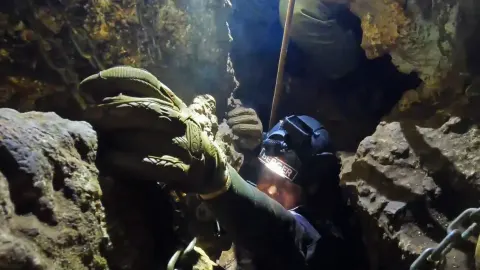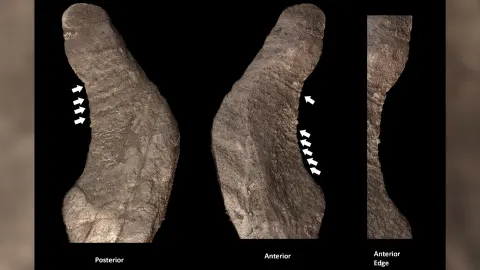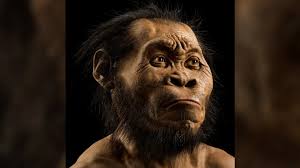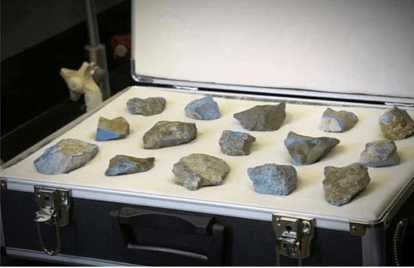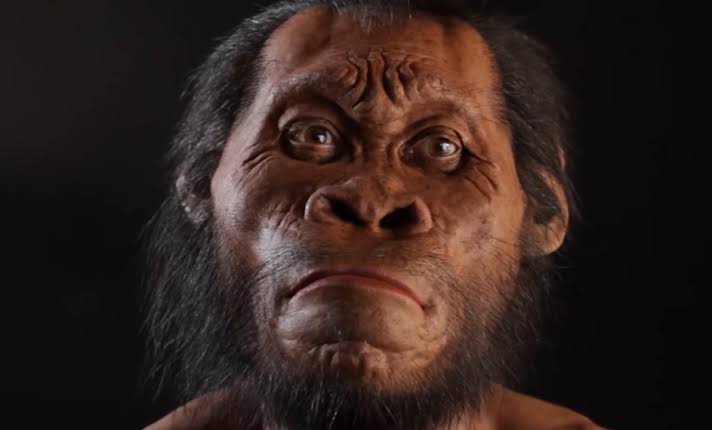
Scientists Uncover Evidence Showing Mysterious Human Species Buried Their Dead and Carved Symbols 100,000 Years before Humans (photos)
Researchers in South Africa have uncovered evidence that members of a mysterious archaic human species buried their dead and carved symbols on cave walls long before the earliest evidence of burials by modern humans.
The brains belonging to the extinct species, known as Homo naledi, were around one-third the size of a modern human brain.
According to the scientists, the revelations could change the understanding of human evolution, because until now such behaviors only have been associated with larger-brained Homo sapiens and Neanderthals.
The new species of human relative was discovered by a team led by National Geographic Explorer-in-Residence Lee Berger of the University of the Witwatersrand deep inside a cave located outside Johannesburg, South Africa. The find was announced by the University of the Witwatersrand, the National Geographic Society and the South African National Research Foundation and published in the journal eLife.
Fossils belonging to Homo naledi were first discovered in the Rising Star cave system in South Africa during excavations in 2013. The cave system is part of South Africa’s Cradle of Humankind, a UNESCO World Heritage Site encompassing an area where scientists have found fossils of multiple ancient human ancestor species — remains that are helping to unlock the story of human evolution.
Read Also:
Elecion: Summary of What Is Happening in Senegal
“It’s not too Late for Love to Find You”- Lady, 58, Says She Shares Her Love Story (video)
Dr. Lee Berger and his team have discovered the remains of Homo naledi adults and children that were laid to rest in the fetal position within cave depressions and covered with soil. The burials are older than any known Homo sapiens burials by at least 100,000 years.
During the work to identify the cave burials, the scientists also found a number of symbols engraved on the cave walls, which are estimated to be between 241,000 and 335,000 years old, but they want to continue their testing to have a more precise dating.
The symbols include deeply carved hashtag-like cross-hatchings and other geometric shapes. Similar symbols found in other caves were carved by early Homo sapiens 80,000 years ago and Neanderthals 60,000 years ago and were thought to have been used as a way to record and share information.
“These recent findings suggest intentional burials, the use of symbols, and meaning-making activities by Homo naledi. It seems an inevitable conclusion that in combination they indicate that this small-brained species of ancient human relatives were performing complex practices related to death,” said Berger, lead author on two of the studies and coauthor on the third, in a statement.
“That would mean not only are humans not unique in the development of symbolic practices, but may not have even invented such behaviors.”
The team has mapped over 2.5 miles (4 kilometers) of the caves so far, which have a vertical depth of 328 feet (100 meters) and expand for more than 656 feet (200 meters) in length, said the studies’ lead geologist Dr. Tebogo Makhubela, senior lecturer of geology at the University of Johannesburg, meaning such exploration is not for the faint hearted.
Delta Man Cries out for Help over Wife Allegedly Assaulting Him Repeatedly (video)
The cave system includes deadly steep drops and tiny passageways like Superman’s Crawl, a tunnel measuring 131 feet (40 meters) long and 9.8 inches (25 centimeters) across, requiring the researchers to belly crawl their way through, said Dr. Keneiloe Molopyane, National Geographic Explorer and lead excavator of Dragon’s Back Expedition (named for one of the cave’s features).
Berger said he even had to lose 55 pounds (25 kilograms) to enter the cave’s chambers in 2022.
“It was the most awful and wonderful experience in my life,” Berger said. “I almost died coming out of there, but it was obviously worth it to make some of these discoveries. But, I think an important part of that, though, is that the journey would not be nearly as difficult, I think, for Homo naledi.”
Pi Network Core Team Introduces Advanced KYC Solution with Machine Automation and Human Verification
Homo naledi shared some similarities with humans, like walking upright and manipulating objects by hand, but members of the species had smaller heads, a shorter stature, and were thinner and more powerfully built, Berger said.
Homo naledi’s shoulders — which were oriented for better climbing — and teeth shared similarities with earlier hominins like Australopithecus, said Dr. John Hawks, professor of anthropology and paleoanthropology at the University of Wisconsin-Madison.
As the team continued deeper into the caves, it became clear that Homo naledi was very familiar with and using broad parts of the cave system.
When Berger and his team announced the discovery of Homo naledi in 2015, they suggested it was possible that the species deliberately disposed of their dead in the cave.
But the idea of a small-brained hominin doing so was considered to be a very controversial hypothesis.
Pope in Hospital for Check-up: Italian Media
In 2018, the team began to find evidence that supported the idea that Homo naledi intentionally buried their dead. The scientists found ovals dug into cave surfaces resembling holes, and the remains of bodies placed inside in curled positions, a shocking discovery.
“It’s not a body that died in a depression or hole. It was a whole body that was covered in dirt and then decayed within the grave itself, in part demonstrating that it was buried at the time as a whole flesh entity, but not by some dramatic collapse or being washed in,” Berger said.
“We feel that they’ve met the litmus test of human burials or archaic human burials and the most ancient human burials, and therefore describe them as graves or burials by the nonhuman species, Homo naledi.”
And then, the team found an artifact within a burial and discovered carvings on the wall.
The meaning of the symbols is unclear, and researchers can’t say whether they were used as a type of language or communication within the species.
“What we can say is that these are intentionally made geometric designs that had meaning for naledi,” Fuentes said. “That means they spent a lot of time and effort and risked their lives to engrave these things in these places where they’re burying bodies.”
“The challenge here, then, is that we now know that Homo naledi, in addition to Homo sapiens and Neanderthals and Denisovans and a few others, were engaging in the kind of behavior that we, even just a few decades ago, thought was unique to us,” he said. “That means we need to rethink the timing of fire use, of meaning-making and of the burial of the dead in hominin history.”


